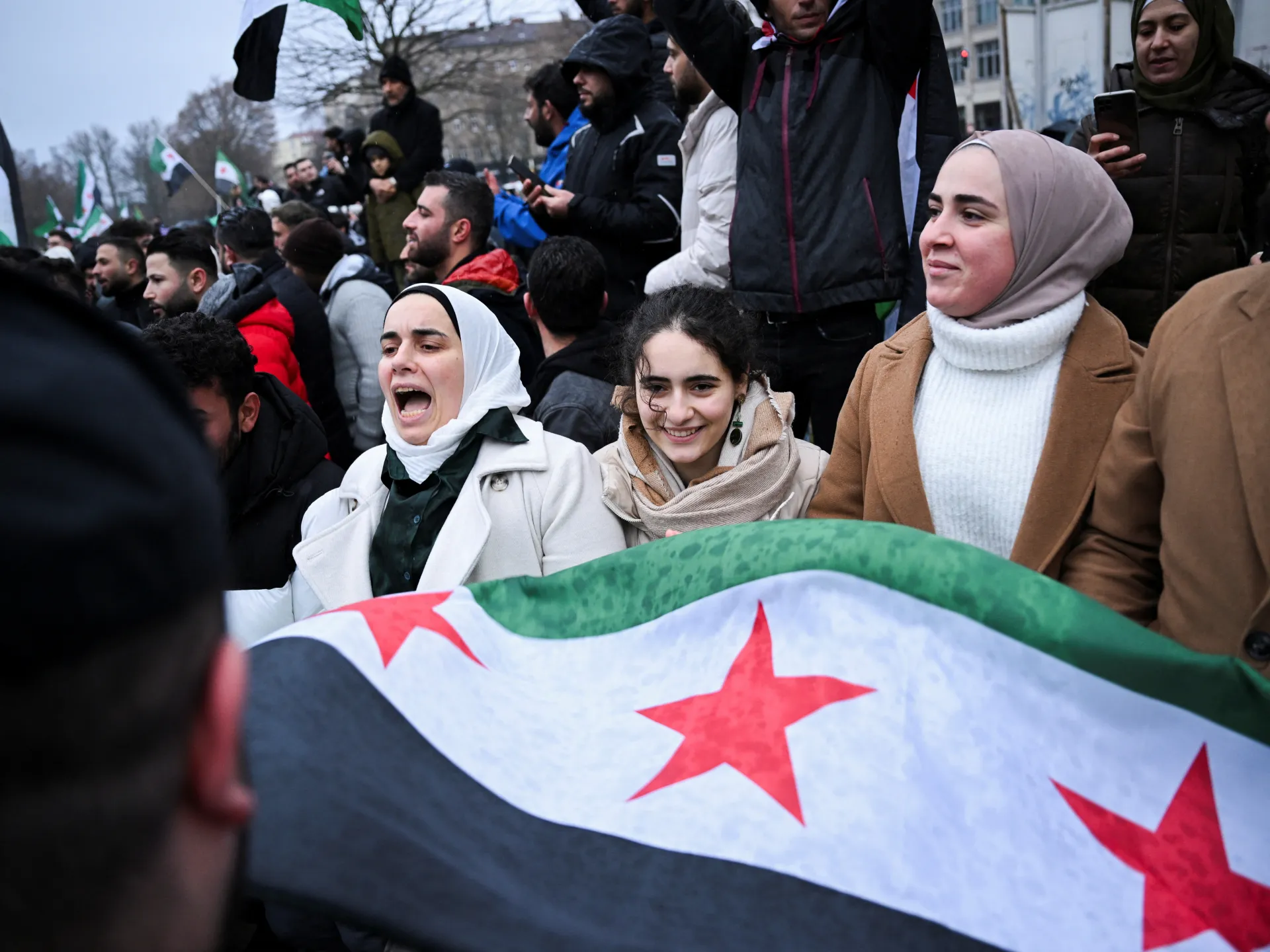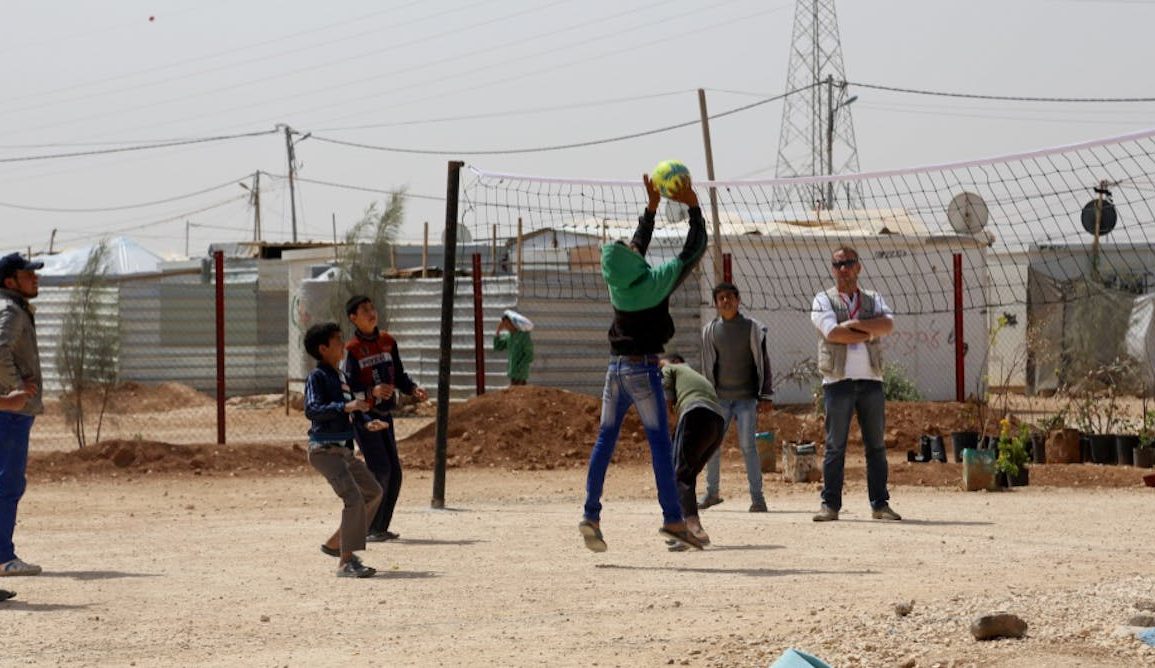When news broke of Bashar al-Assad’s downfall on December 8, 2024—13 years after the Syrian uprising began—Syrians worldwide celebrated.
We shared in their joy, having spent the past decade engaging with Syrians displaced to neighboring countries like Jordan, Lebanon, and Turkey. Our research has focused on humanitarian aid in refugee camps and the experiences of revolutionaries in exile.
In the days and weeks following Assad’s ousting, we spent countless hours on the phone with people we’ve come to know since their lives were upended in 2011—hoping that 2025 might finally mark a turning point in their long and arduous journey.
One of us (Charlotte) also traveled to Syria in January 2025 to witness the unfolding reality and speak to those navigating this new chapter.
“Syrians everywhere, inside Syria and outside Syria, did not ever imagine we would reach this stage,” said Qasim, 42, speaking from his home in Zaatari camp, the world’s third-largest refugee camp in northern Jordan. “No one ever expected that Assad would fall and leave the country.”
Like the 80,000 others in the desert camp, Qasim has spent the past decade rebuilding his life in Jordan.
Since fleeing Daraa in 2013, he has taken on freelance jobs, built a network of clients, and put food on the table by working for aid organizations in the camp while also offering painting and plastering services outside of it.
But in Syria, he says, “There’s no home, there’s no work, there’s nothing.”
His family has grown from four to 11 members, and his daughters—who fled Syria as young children—are now in their final years of high school.
The Insights section remains dedicated to high-quality longform journalism. Our editors collaborate with academics from diverse fields, tackling a wide array of societal and scientific challenges.
Now, with Assad gone seemingly overnight—and the revolution reaching its 14th anniversary in March—the dream of returning home or finally ending a decade of exile feels within reach.
Yet this dream brings with it complex existential, practical, and legal questions. After years in exile, how does one uproot their family again? How do parents explain the return to children who have never known life in Syria? And what awaits them on the other side of the border?
Qasim’s family has outgrown the home he left behind. While life in the camp, with its electricity shortages and economic struggles, is far from ideal, at least he has managed to get by.
Returning to Syria also carries a financial burden—Qasim’s family of 11 would need $550 just to cross the border. Many displaced Syrians lack the economic stability to prepare for the costs of returning, leaving their dream of going home a distant goal they must work toward.
Syria’s Critical Condition
Rebuilding Syria in the aftermath of Assad’s rule will take years. The International Organization for Migration (IOM) has warned that the country is not yet ready to receive returnees.
The situation has been exacerbated by U.S. President Donald Trump’s decision in January to freeze U.S.-funded foreign aid, which the UN’s emergency aid coordination office (OCHA) reports has disrupted up to 90% of humanitarian efforts in parts of Syria. The consequences of this funding freeze have rippled across Syria and its neighboring host countries.
Meanwhile, Western powers continue to enforce sanctions against Syria, where 90% of the population already lives below the poverty line, and 70% require urgent humanitarian assistance.
Security remains fragile across the country. Conditions in the northwest have improved following an agreement between the Kurdish-led Syrian Democratic Forces and Damascus’s provisional government.
However, March saw violent attacks in the coastal regions, with over a thousand mostly Alawi civilians killed by Assad loyalists. Israel has expanded its war against Palestine and Lebanon into parts of Syria, even bombing the capital, exploiting the power vacuum.
As of early 2025, 115,000 Syrians had already returned from Jordan, Lebanon, and Turkey. In December, the UN High Commissioner for Refugees (UNHCR) projected that 1 million Syrians would return by June, but that estimate has now dropped to 600,000 by September.

Unwelcome Guests
Jordan, Turkey, and Lebanon are not signatories of the 1951 Refugee Convention, meaning they are not obligated to recognize displaced Syrians as refugees with internationally protected rights. Instead, these governments refer to Syrians as “guests”—but that does not mean they are welcomed.
“We were not treated as guests in Turkey. People did not want us there,” said Umm Ahmad.
She recalled her life in Gaziantep as one of relentless hardship, where she had to beg for assistance, and her son endured 12-hour shifts in a clothing factory.
As “guests,” Syrians face social and legal barriers to accessing services, education, healthcare, housing, and employment. They are often scapegoated for economic struggles and dwindling resources, fueling xenophobic discrimination. Lacking protected labor rights, many—like Umm Ahmad’s son—are pushed into informal jobs, leaving them vulnerable to exploitation and abuse.
Turkey hosts over 3 million Syrian refugees, yet their status remains uncertain. Residency documents are difficult to obtain and inconsistently issued, as Turkey reserves official “refugee” status for Europeans.
Once considered the most welcoming country due to its open-border policy and support for the Syrian opposition, Turkey’s stance shifted after the 2016 EU-Turkey deal led to border closures. Since 2019, deportations have increased, and there remains no clear path to Turkish citizenship for Syrians.
Lebanon, home to around 1.5 million Syrians, has long harbored resentment toward them due to Assad’s occupation of Lebanon during the Lebanese Civil War. Only 17% of Syrian refugees there have obtained legal residency.
“I can’t wait to go back to Syria. Our life here has been so hard,” said Umm Ayman, who has lived in Beirut’s Shatila camp for ten years.
Still, she remains cautious: “I want to wait to see how the situation evolves and if it’s safe to go back.”
Having never obtained legal status, Umm Ayman was unable to enroll her children in Lebanon’s school system and was forced to homeschool them—another reason she longs to return. However, with no close relatives or home to go back to in Syria, she is hesitant to make a final decision until she can visit her hometown of Homs.
In Jordan, where only about 20% of the 1.3 million Syrian refugees live in official camps, funding for Syrian aid has been in decline for years—well before the U.S. aid freeze in January.
“Recently, there’s been scarce aid in the camp,” Qasim said. “People are only just managing to take care of themselves.”
Now, the once-thriving refugee-run market in Zaatari has slowed to a halt as residents save money for their return. With his current job ending soon, Qasim is searching for another opportunity outside Zaatari—”if there is any.”
Outside the camps, Syrians in Jordanian cities have even less access to aid. While the 2016 Jordan Compact was meant to provide Syrian refugees with formal job opportunities, the high cost of work permits and social security contributions has limited its success.
For many, the journey home is still uncertain—both logistically and emotionally. As Syria rebuilds in Assad’s absence, the question remains: will those who fled find a place in the new Syria?


